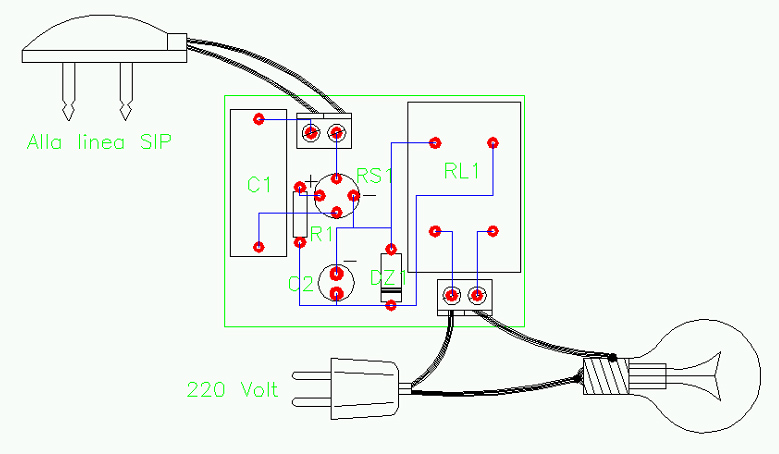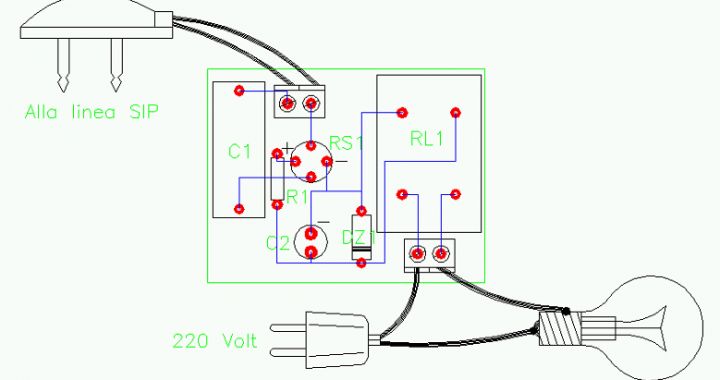LPTEL is a telephone ring repeater: it turns on a light bulb when the telephone is ringing. It connects to the telephone line, so it is independent of the telephone.


Telephone ringtone repeater, components
R1 - resistore 47 ohm 1/4 W
C1 - 2.7 uF 250 V polyester capacitor
C2 - 10 µF 25 V electrolytic capacitor
RS1 - rectifier bridge 100 V 1 A
DZ1 - zener diode 24 V 1 W
RL1 - low absorption relay (max 25 mA) 24 V, single contact 230 Vac 2A
I recommend using a 1A fuse in series with the 230 Vac power supply of the bulb.
LPTEL, description
Sometimes it happens that you don't hear the phone ringing, just because you are doing noisy work or listening to music. The circuit that I present to you, the telephone ring repeater, avoids this discomfort even for the deaf, not because it amplifies the sound of the telephone ring (it could also do this, it would be enough to insert a bell at the exit), but because it turns on a lamp with each ring. By placing this lamp, preferably colored and powerful enough (60 Watt) in a visible position, it will immediately alert us if someone is calling us. As can be seen from the diagram, the circuit requires very few easily available components.
OPERATION OF THE TELEPHONE RINGER REPEATER
The operation of the repeater circuit is very simple: when the SIP line is at rest, there will be a direct voltage that will not pass through C1. When the phone rings, at the ends of the line there will be an alternating voltage of about 70 Volts that will pass through C1, will be straightened by RS1, reduced by R1 and filtered by C2. This voltage will activate the relay, which can drive any type of electrical circuit. The relay used is of the low absorption type, about 25 milliamps (1000 ohms at 24 V, or 500 ohms at 12V), since the current supplied by sip is low.


Project start: February 1994. State: for technical publication.
